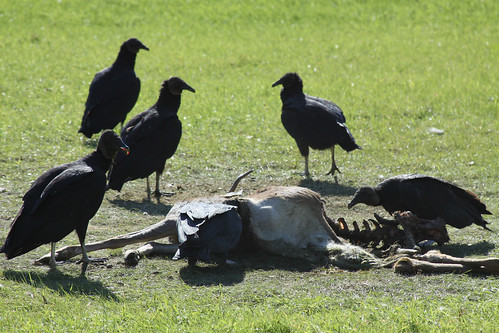Dracula
is an 1897 Gothic horror novel by Irish author Bram Stoker.
Although more people probably know the character from the many movie versions, the character of the vampire Count Dracula in the novel is the fictional origin story.
Stoker did not invent the idea of a vampire, but he certainly set the modern form of it.

His novel tells the story of vampire Count Dracula's move from Transylvania to England in search of new blood and to spread the curse of the undead curse. He is opposed by those who follow Professor Abraham Van Helsing.
The first appearance of the English word vampire (as
vampyre) in English was a travelogue titled
Travels of Three English Gentlemen published in 1745, but vampires had already appeared in French and German literature.
Austria gained control of northern Serbia and Oltenia in 1718 and officials noted the local practice of exhuming bodies and "killing vampires."
The English term was probably derived via French
vampyre) from the German
Vampir, in turn from the Serbian
vampir.
Stoker’s vampire was based on Vlad the Impaler (
Vlad Tepes), a Romanian prince who had a thing for impaling his enemies. His father, Vlad II, was known as Dracul, meaning dragon or devil, because of he was a member of a group of knights called The Order of the Dragon.
Prince Vlad was born in 1431 into a noble family of Transylvania, a place that was between the two empires of the Ottoman Turks and the Austrian Hapsburgs. Vlad "Dracula" (diminutive of Dracul)
was imprisoned by the Turks and later by the Hungarians.
Theirs is not a happy family story. Dracula's father was murdered. His older brother, Mircea, was blinded with red-hot iron stakes and buried alive.
As Vlad the Impaler, Dracula's preferred method of torture for prisoners was to impale them and leave them to writhe in agony.
In battle, supposedly one Turkish advance was halted because they couldn't get past the smell from decaying impaled corpses.
Stories of his actions became legend. Though it was never claimed that he was a vampire Did he eat his meals surrounded by hundreds of impaled victims? Did he eat bread dipped in blood?
He was killed in December 1476 fighting the Turks near Bucharest, Romania. He was buried at the Snagov Monastery nearby. The monastery was also used as a prison and torture chamber. When prisoners prayed before an icon of the Blessed Virgin, a trap door opened dropping them onto sharp stakes below.
 |
Nosferatu, from the 1922 German film, directed by F. W. Murnau,
starring Max Schreck as the vampire Count Orlok
(name changed to avoid copyright issues with the Stoker estate) |





